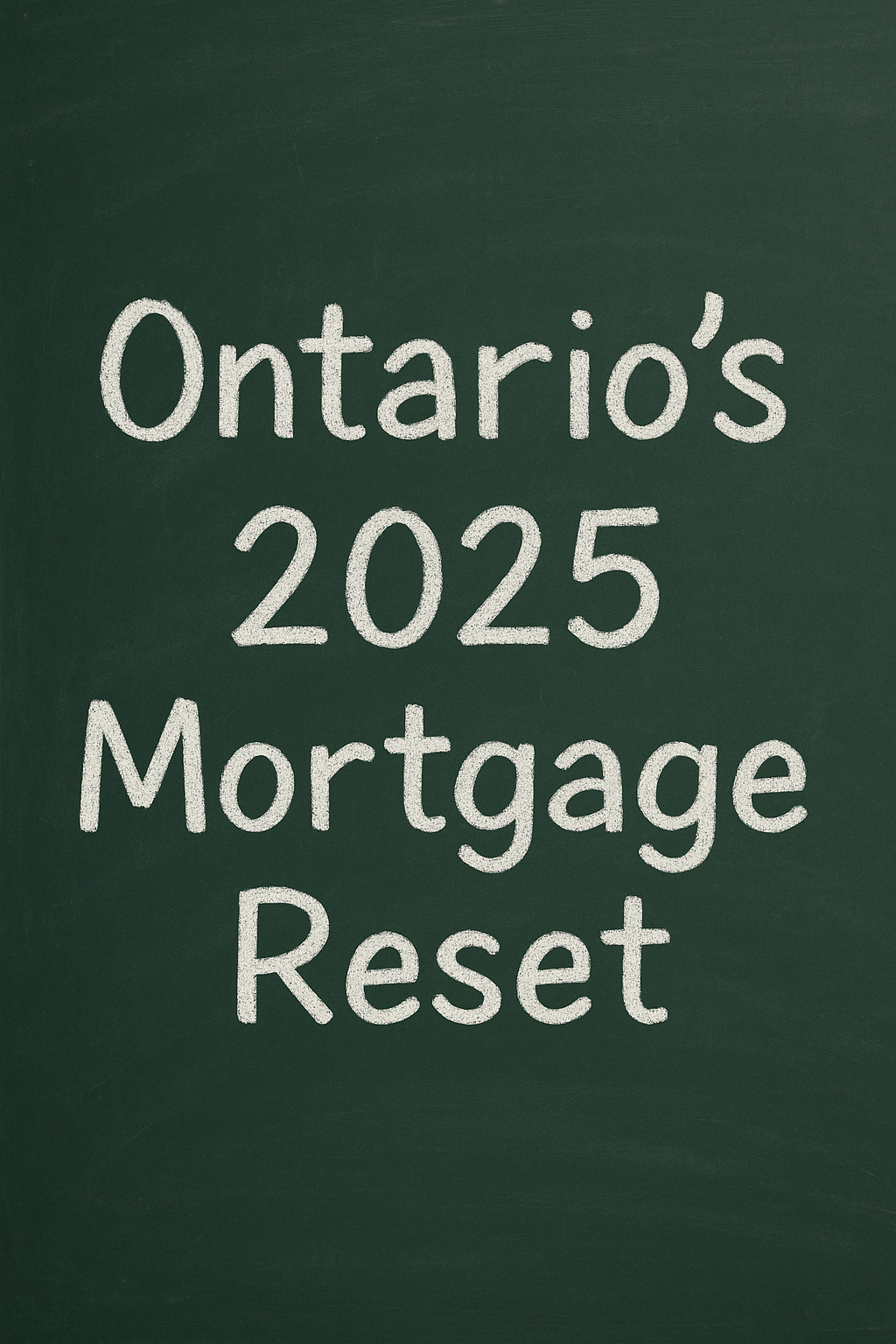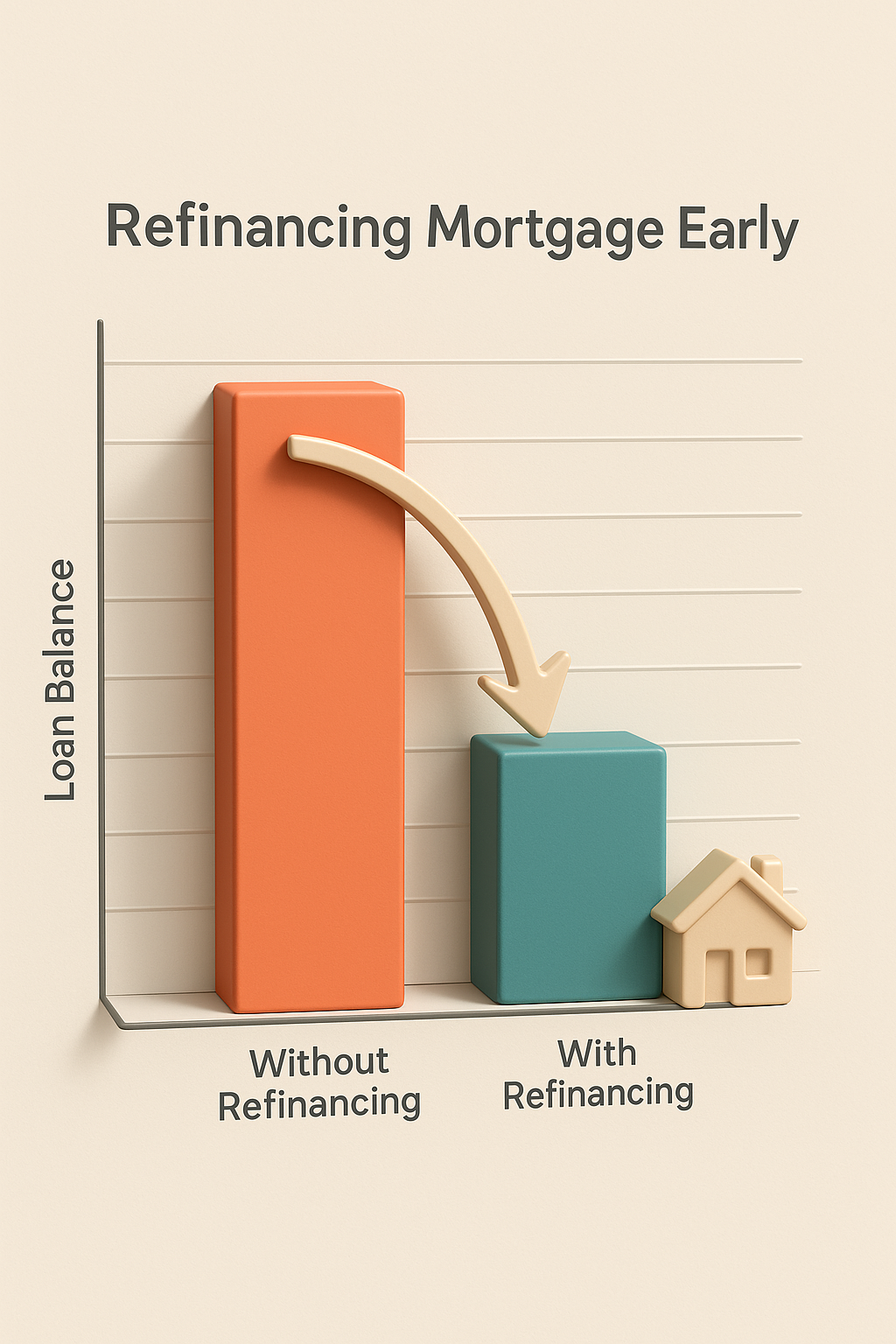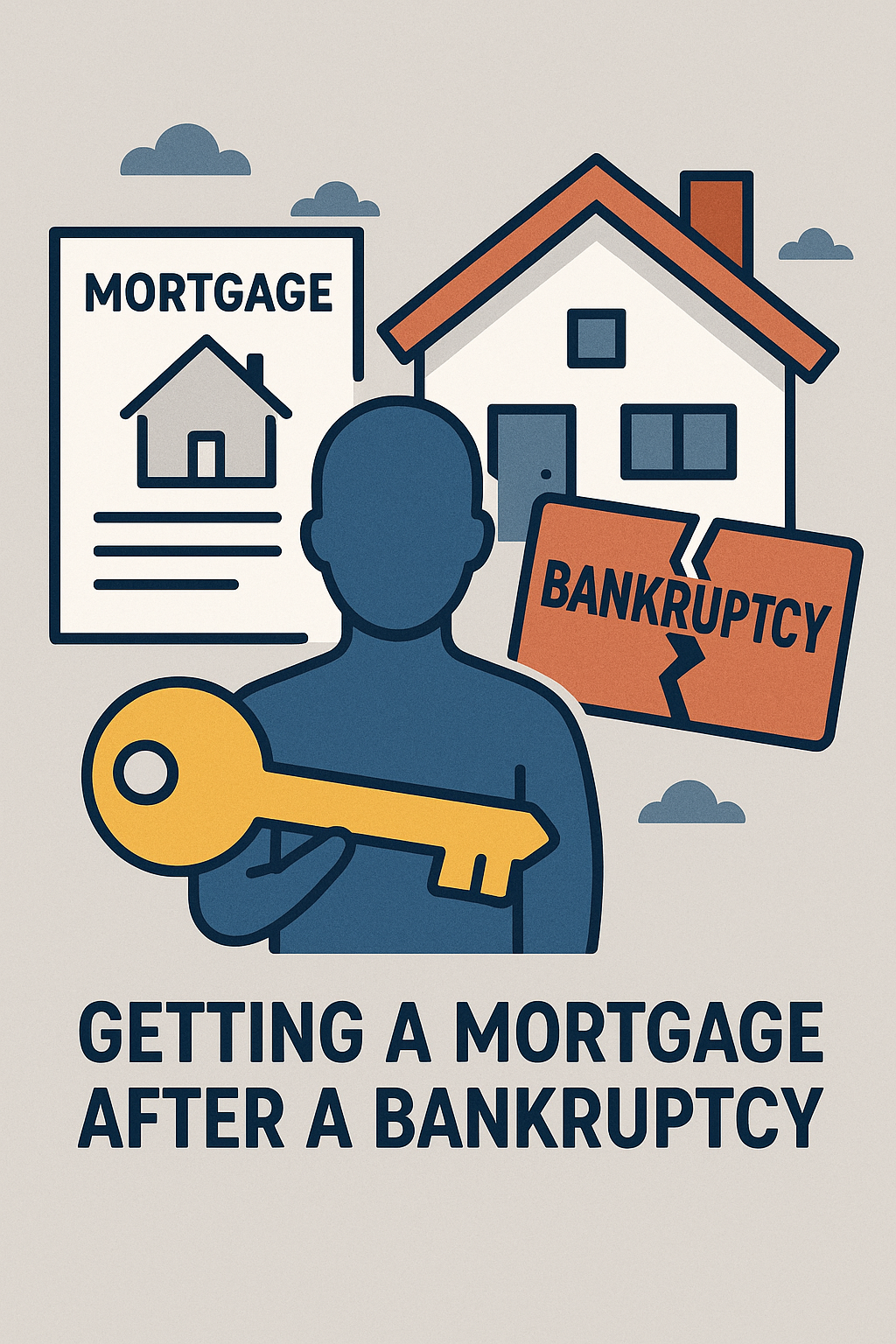Table of Contents
ToggleOntario’s 2025 Mortgage Reset: How Rate Cuts, 30-Year Insured Amortizations & a Cooler Market Affect Your Next Move
Short version: Ontario’s housing market has more choice than it did at the peak, mortgage rates have eased from recent highs, and a couple of rule changes give borrowers new ways to qualify and negotiate. If you’re buying, renewing, or refinancing in 2025, you’ve got levers—use them.
The 2025 backdrop in plain English
After a roller-coaster two years, Ontario’s mortgage landscape looks more balanced. Policy rates aren’t at emergency levels anymore, fixed rates have drifted lower with bond yields, and the pace of price growth has cooled. That combination is shifting power away from bidding wars and toward careful, math-first decisions. For borrowers, it means two things:
-
Affordability is improving—but not overnight. Lower rates help, yet qualifying and cash flow still require planning.
-
Selection is back. More listings in many sub-markets allow buyers to negotiate. Sellers have to be price-precise and presentation-ready.
Fixed vs. variable in 2025: what matters now
Picking a mortgage term is really about rate path + risk tolerance + timelines.
-
Fixed rates: Great if you want payment certainty while rates trend sideways or gradually lower. Consider shorter-to-mid terms (e.g., 2–4 years) if you expect further easing and want optionality sooner, or a 5-year if you value maximum stability and can live with a prepayment penalty if you break early.
-
Variable rates: Attractive if you’re comfortable with payment movement and believe cuts continue. Ask whether your variable is fixed-payment (amortization flexes) or adjustable-payment (payment changes with prime). That difference dictates your cash-flow experience.
Tip: Don’t chase the very last basis point. Features—portability, prepayment privileges, penalty calculation, and blend-and-extend—often save more money than a tiny rate discount.
Market pulse: negotiating room returns
Across the GTA and many Ontario regions, conditions have shifted from frenzied to balanced-to-buyer-leaning. Practically, that means:
-
Days on market are more forgiving; buyers can insert financing and inspection conditions without being laughed out of the room.
-
Sellers who anchor to yesterday’s peak quickly meet resistance; pricing to today’s comps and investing in presentation (repairs, staging, pro media) pays.
If you’re moving up or down, the sequence matters. In a cooler market, it’s often safer to sell first (firm up proceeds), then write a purchase with confidence—unless you have the financial runway to handle overlap.
New lever #1: 30-year insured amortizations (for specific buyers)
First-time buyers purchasing newly built homes can access 30-year insured amortizations. The goal is simple: lower the monthly payment so debt ratios pass more readily.
Who it helps most
-
Households with solid credit and income who are just shy on debt service.
-
Buyers considering developers offering closing credits or upgrades; the longer amortization can pair nicely with incentives to tip you over the line.
Pros
-
Lower monthly payment, easier qualification.
-
You can still prepay later and act like it’s a 25-year schedule when cash flow improves.
Cons
-
More interest over the life of the loan if you never prepay.
-
Applies to new construction for first-time buyers—not everyone qualifies.
Quick illustration (purely educational):
Per $100,000 borrowed at 5%, a 25-year amortization costs about $585/month, while 30 years lands near $537/month—roughly $45–$50 less per $100k. Scale that to your mortgage size to estimate potential relief. (Your actual payment depends on your rate, premium, and lender.)
New lever #2: easier lender switches at renewal
If you’re renewing without borrowing more (a straight switch), recent changes allow many borrowers to move lenders without re-qualifying under the stress test. Translation: you’re no longer stuck accepting a so-so offer because you can’t re-pass a strict qualifying rate.
How to exploit it
-
Start 120–180 days out. Ask your current lender for their true best offer (not the first one).
-
Shop it. Competing lenders now have a real shot at your file—leverage that.
-
Negotiate features, not just the headline rate: prepayment room, portability windows, and clear penalty math (posted vs. discounted rate IRD can be a big deal).
-
Mind the exceptions. If you’re adding money, extending amortization to reduce payments, or consolidating debt, you’re back under full qualification.
The quiet rule shaping approvals: LTI portfolio limits
Regulators have pushed lenders to manage the share of new loans above certain loan-to-income (LTI) levels. It doesn’t mean you can’t get approved over a specific LTI; it means lenders have a quota-like cap on how much of that business they can book. In practice, borderline files may see:
-
More scrutiny on income stability and credit.
-
Price differences between lenders as some protect capacity for the strongest applications.
What to do: Strengthen your file—clean up revolving balances, document income thoroughly, and show liquid reserves. A broker can route your application to lenders with capacity for your profile.
Renewal & refinance playbooks
If you renew in the next 6–12 months
-
Hold a rate early, then refresh if markets improve.
-
Consider amortization resets (where allowed) to smooth payments, then set automatic prepayments to accelerate once rates drop.
-
Use the straight-switch flexibility to demand sharper pricing and better features.
-
Test scenarios: fixed 3-year vs. 5-year, variable, and hybrid (split) structures to balance risk.
If you need to refinance (top-up, consolidate, buy out a spouse, etc.)
-
Expect full qualification. Improve your odds by reducing unsecured balances 60–90 days before application and avoiding new credit inquiries.
-
Run a debt-consolidation model comparing: (a) one lower mortgage payment with a clear payoff plan vs. (b) minimums on multiple high-rate accounts.
-
If traditional approval is tight, explore alternative/B-lender or private options with a defined exit plan back to an A-lender.
Buyer strategies for 2025
-
First-time buyers (new builds): Pair the 30-year insured option with developer incentives; ask for caps on assignment, closing cost credits, and a transparent occupancy timeline.
-
Resale buyers: Use the slower tempo to your advantage—finance and inspection conditions, and a negotiation strategy anchored to recently sold comparables.
-
Move-up sellers: List clean (repairs done), price to today, and structure purchase conditions that give you an out if your sale lags.
Investors: back to fundamentals
With yields and rents normalizing, “cash flow first” is back. Underwrite at conservative rents and interest rates, include vacancy and maintenance, and model DSCR (debt service coverage) you can live with. Consider shorter terms or variables if you expect lower rates, but only if your cash flow can handle bumps. Keep a rainy-day reserve—it doubles as strength in underwriting.
Your action checklist
-
120–180 days to renewal? Start now. Rate-hold, compare, and negotiate features.
-
Buying soon? Get a full pre-approval, not just a quick pre-qual. Ask your broker if the 30-year insured route fits.
-
Need cash-flow relief? Explore amortization management, consolidation, or a short-term alt solution with a defined exit.
-
Borderline file? Improve credit utilization, document income, and add savings to your balance sheet before you apply.
FAQs
Are Ontario mortgage rates going down in 2025?
They’ve eased from the peak, but the path is gradual. Plan using today’s numbers and treat future cuts as upside.
Who can get a 30-year insured amortization?
Generally, first-time buyers are purchasing new construction. It’s designed to lower monthly payments and help with qualification—then you can prepay later.
Can I switch lenders at renewal without the stress test?
If you’re doing a straight switch (no new money, same amortization), many borrowers can move without re-qualification—opening the door to real competition on your renewal.
Is it a buyer’s or seller’s market?
Many areas are balanced or lightly buyer-leaning. That can change by neighbourhood and property type; comps within the last few weeks matter more than headlines.
Bottom line: 2025 is a reset, not a rewind. You have more room to negotiate, better tools to qualify, and a market that rewards planning over FOMO. If you want tailored numbers—renewal vs. refinance, 25- vs. 30-year, fixed vs. variable—LendToday.ca can model it for you across A-lenders, B-lenders, MICs, and private options, and map a clear path from “approval” to “paid-off faster.”
- Most Lenient Mortgage Lenders in Canada: A, B, and Private Explained - December 16, 2025
- Facts About Getting a Reverse Mortgage Before Your Home Is Paid Off - December 14, 2025
- 7 Smart Truths About Refinancing a Mortgage at Any Time (And Avoiding Costly Penalties) - December 12, 2025






